In this third article of the series we move on to Hampi, just under 7 hours driving time from Chikmagalur. The first part of the drive takes you through pleasant countryside, past small farming communities which appear to be quite prosperous. For many kilometres coconut plantations alternate with fields of different types of grain.
At about the half-way point of the journey lies Chitradurga, which advertises itself as the ‘City of Fort’. The fort occupies a large, boulder-strewn hillside overlooking the town. It was built and expanded by different rulers over several centuries, but much of what you see today dates back to the 17th/18th century. It appears to have changed hands quite frequently – despite being protected by seven sets of walls. The fort houses a collection of temples, some originally built as Buddhist monasteries. This varied history is evident to some extent in the architectural style of the buildings.
What has remained foremost in our minds is the tranquil, serene atmosphere of the fort, particularly after you had left the first two or three sets of walls behind you.
Apart from being interesting, the stop-over at Chitradurga also provided a welcome opportunity for us to stretch our legs. The onward journey to Hampi involved a succession of roadworks and seemingly unending queues of lorries. However, once we got there, we were impressed by the breathtaking beauty of the area.
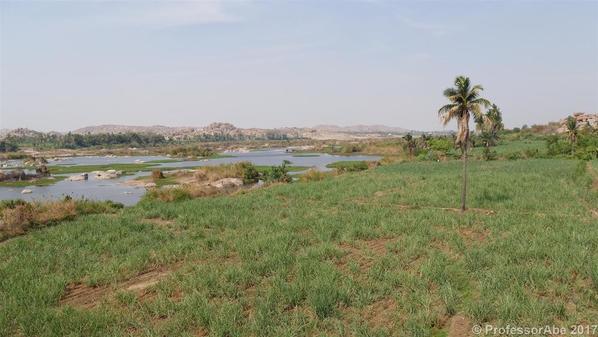
Rice is the main crop grown here.
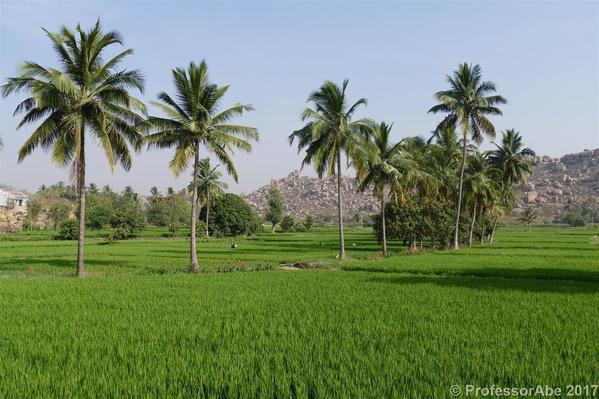
We also found that we had made a good choice with our hotel. It was in a very peaceful location, surrounded by the enormous boulders which are typical of the area. The view below was that from our room and the photo after that was taken from beside the breakfast table.
A couple of beers and an Indian-style barbecue readied us for the following day’s explorations.
Hampi is a UNESCO World Heritage Site. The UNESCO website describes it as ‘austere and grandiose’, as well as being located in a ‘spectacular setting’. All that chimes with our own views. The sources we had consulted, however, had not fully prepared us for the sheer scale of the place. The site is absolutely enormous and you could spend many days here and discover something new every day.
In its heyday Hampi was called Vijayanagar and for some 200 years it was the capital of the empire of the same name. This covered the whole of southern India. It reached its zenith in the early part of the 16th century and finally collapsed in 1646. Hampi’s monuments consist of two main groups: the sacred and the royal ones. These are also separated physically, both by distance and sets of fortifications.
To get the most out of your visit, you will need a guide. Ours came from Anegundi, a village directly opposite Hampi on the other side of the river Tungabhadra. It is well worth a look at in itself. To get to Hampi we had to cross the river by ferry, which turned out to be a wooden motorboat with just enough room for a couple of bikes and 7 or 8 people.
First up on our agenda was a visit to the Vitthala temple. This is arguably one of the most famous parts of Hampi and, in contrast to many of the other monuments, you have to pay an entrance fee here. (The same ticket covers other places where a charge is levied.)
The photo at the beginning of the article was taken at the Vitthala temple. It shows the stone chariot which has become one of the key icons of Karnataka’s official tourism promotion campaign. The chariot sits in the courtyard of the temple. Originally the wheels could be turned, but they have now been fixed in position in order to prevent them from being damaged.
The shot below is of the entrance to the Vitthala complex.
The complex comprises several temples.
Once again, the serene atmosphere struck us. We had feared that there would be long lines of tourist coaches – in fact there was hardly anybody else. (However, the size of the nearby car park suggested that it might get much busier at certain times.)
The distances between some of the sights are considerable and you will need some form of transport. It appears that there are plenty of tuk-tuks available, but, of course, we had our car. The Royal Centre is virtually on the other side of Hampi from the Vitthala temple. The photo below is of the Queen’s Bath.
Not far from there is the Mahanavami Platform, erected largely to give the royal family good views, particularly of the processions during festivals.
A photo from the top shows the extent of the Royal Centre – although not much remains standing.
The stepwell, however, has been restored and is one of the highlights in this area. The crazy zig-zag patterns of some of these wells never cease to fascinate me.
Definitely also worth a look is the Hazara Ramachandra temple, some 300m away. It is famous for its wall panels telling the story of the epic Ramayana, but there is plenty more to see. Below is a shot taken inside the temple.
The road from there takes you to two other gems of Hampi, the Lotus Mahal and the Elephant Stables. The former is in an area which was reserved for the women of the royal household and takes its name from its shape, suggesting a half-open lotus bud.
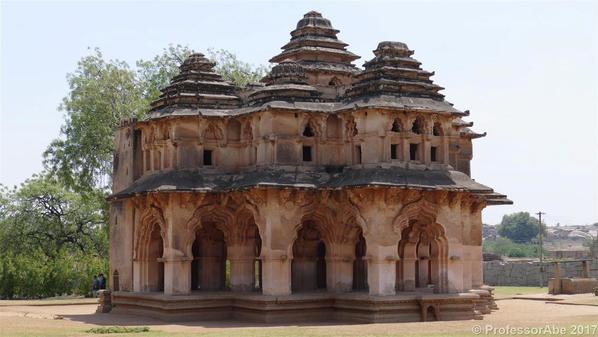
The name of the Elephant Stables requires no further explanation.
11 chambers housed the royal elephants. The guards’ quarters are next door and now serve as museum.
In the north-western corner of Hampi is Hemakuta hill. From here you get superb views of the area, particularly of the temples by the river. In the foreground on the left of the photo below are several Jain temples, in the background is the vast expanse of the Virupaksha temple. Its impressive gopura is shown more clearly in the following photo.
Visiting the Virupaksha temple is an absolute must (– note that it closes for an hour or so at midday). Apparently there has been a temple here since the 7th century. Below is a photo from inside the complex.
Just along from the Viripaksha temple is the Bazaar Street. This area once was an important trading venue for all sorts of goods, including gold and jewels. Only parts of a colonnaded street have survived from the old bazaar.
Close by is a small settlement with a number of shops and restaurants. The Mango Tree serves nice tea and offers a good selection of snacks and small meals at reasonable prices. We enjoyed relaxing there for an hour or so before making our way back to the hotel.
On our second day at Hampi we did not have a guide and we basically went through the guidebook picking out places we had not visited on the previous day.
One of these was the Krishna temple, pictured below.
It is quite a large complex with plenty to see. According to the guidebooks, it dates back to 1513. Opposite the temple lies the area of the Krishna Bazaar, which has been excavated only relatively recently. As the photo shows, the colonnades and the tank are quite well preserved.
We also had not seen the ‘Underground Temple’, whose proper name is Prasanna Virupaksha temple, on the first day. Its nickname stems from the fact that it was buried well underground when the excavations started. Since much of it is below the level of its surroundings, it gets flooded easily. Even when we visited – after many months without rain – parts of it were under water.
Outside Hampi’s main temple complexes there are also a number of large statues, usually in their own separate enclosures. The photo below shows the Narasimha Monolith, which was carved out of a single boulder. It represents the Hindu deity Vishnu in his half-man, half-lion manifestation.
The next shot shows a huge statue of the elephant god Ganesh. Viewed from the back of the shrine you can also see Parvati, his mother, and Ganesh is seemingly sitting on her lap.
The statue is near Hemakuta hill. I am adding a further photo from this magical location.
Further afield is Anjaneya hill, which is home to a whitewashed temple dedicated to the monkey god Hanuman. The hill is regarded as his birthplace. Some 550 steps lead to the top.
As we travelled around the area, we came across this colourful chariot, sitting by the roadside.
From what we could gather, it had been the central artefact in a recent religious festival.
To be continued with pt.4: Aihole, Pattadakal, and Badami

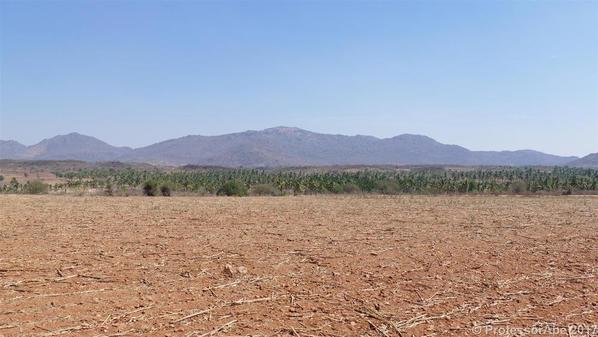
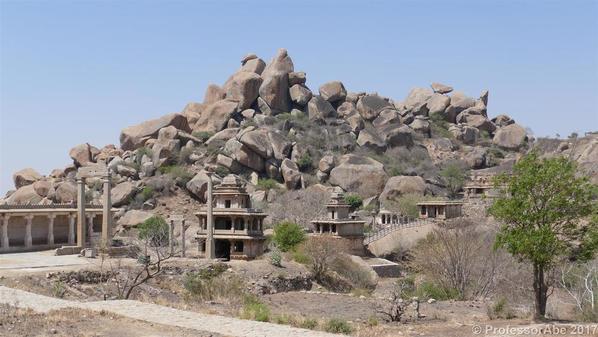
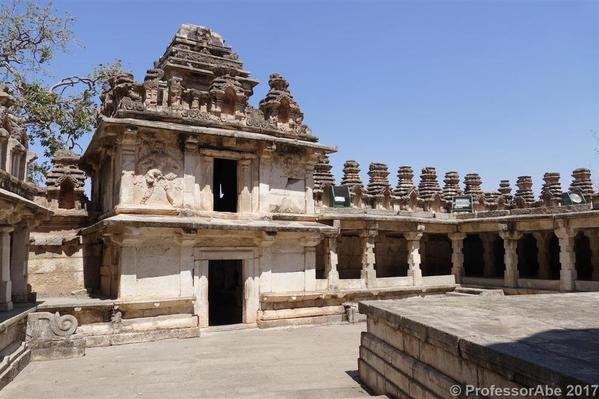
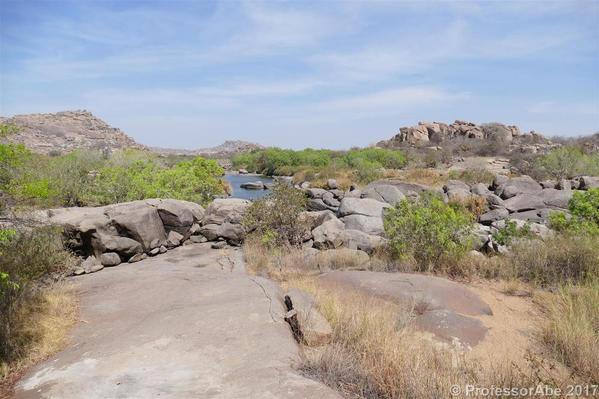
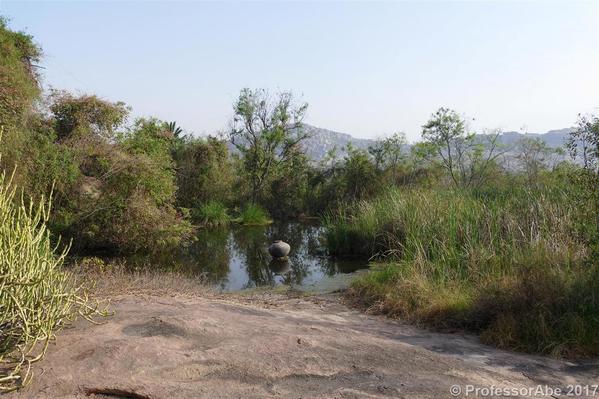
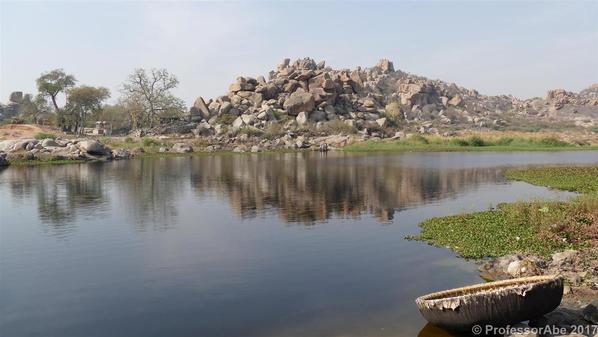
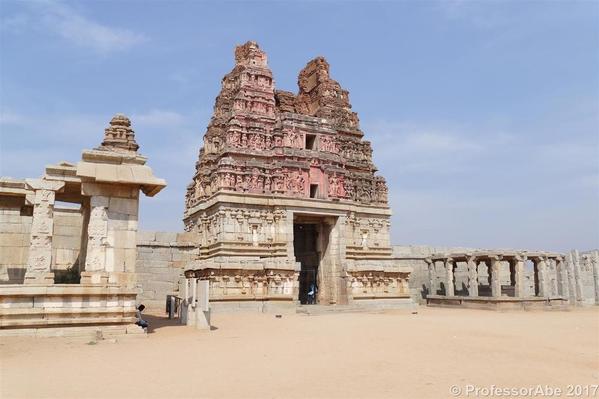
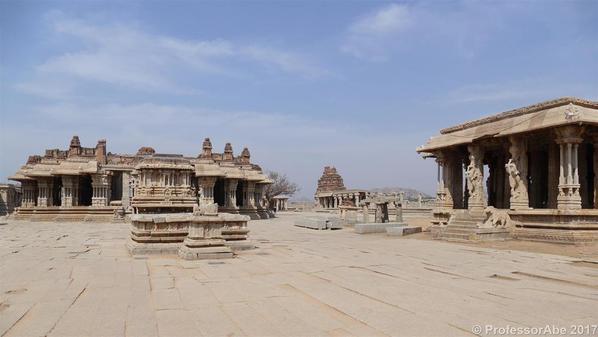
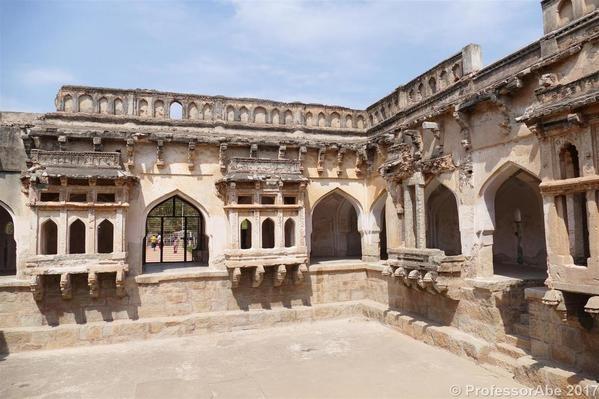
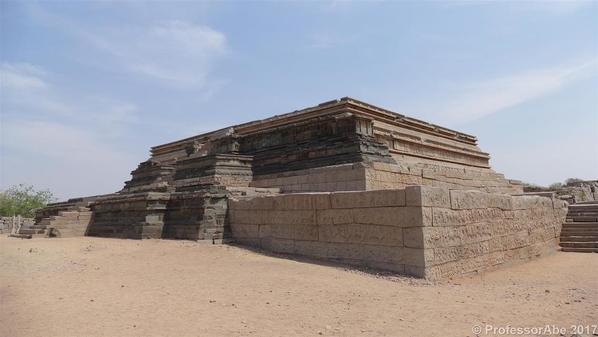
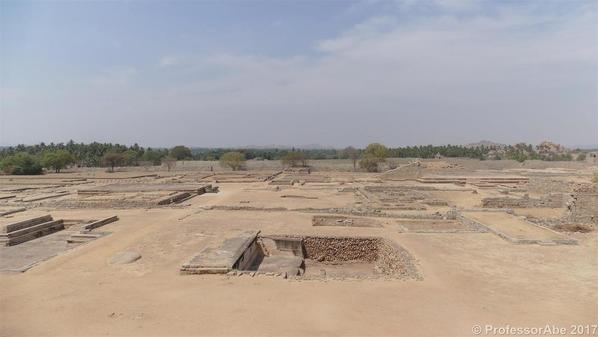
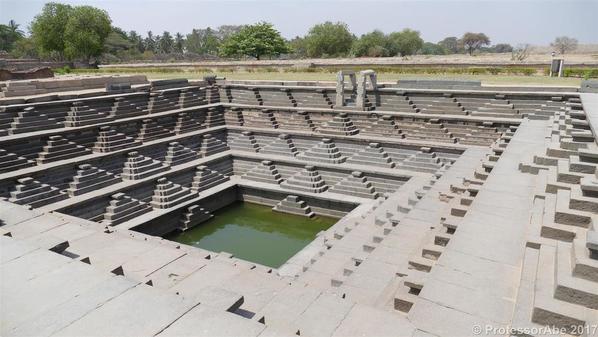
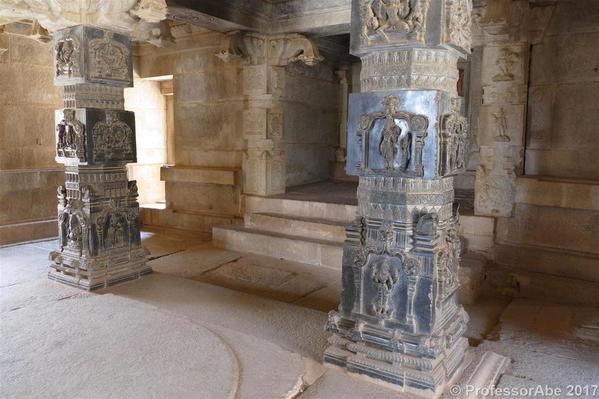
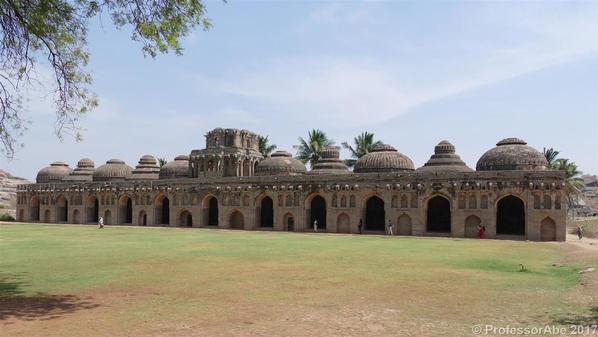
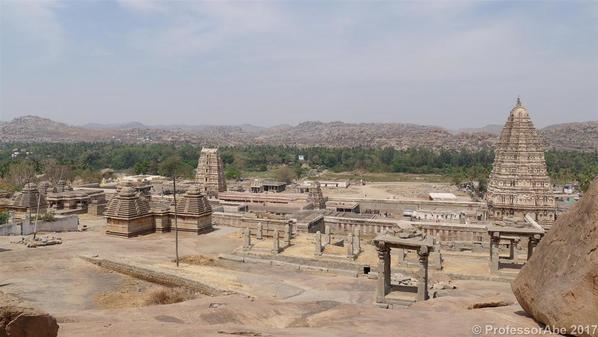
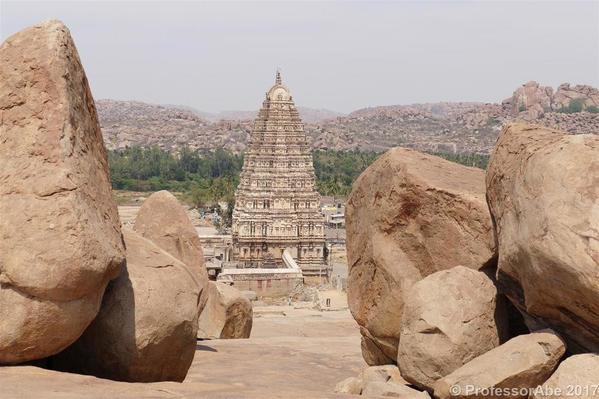
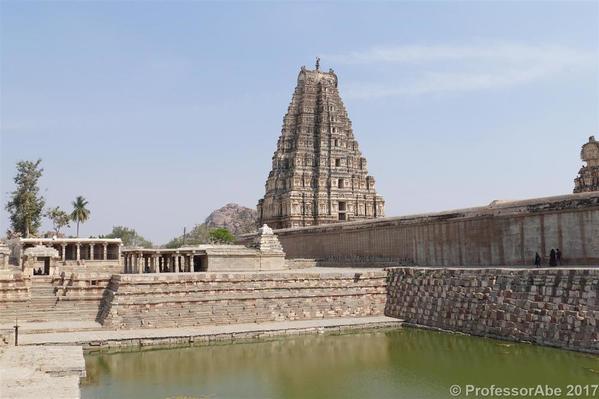
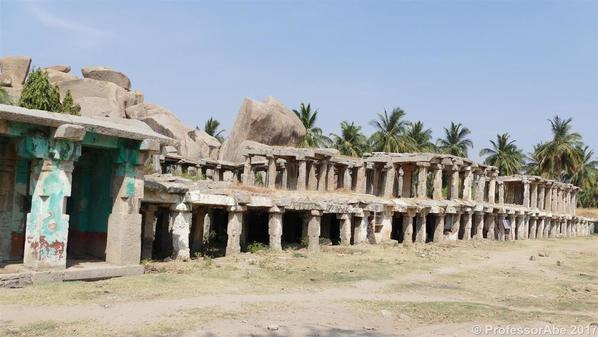
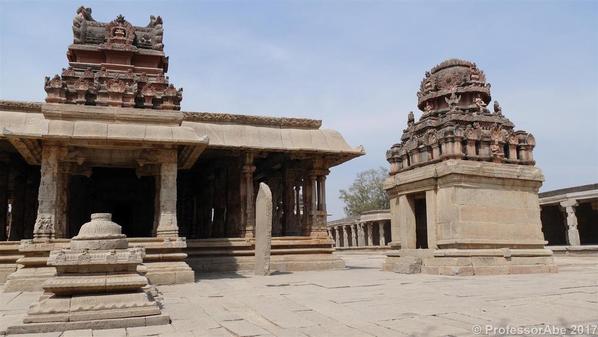
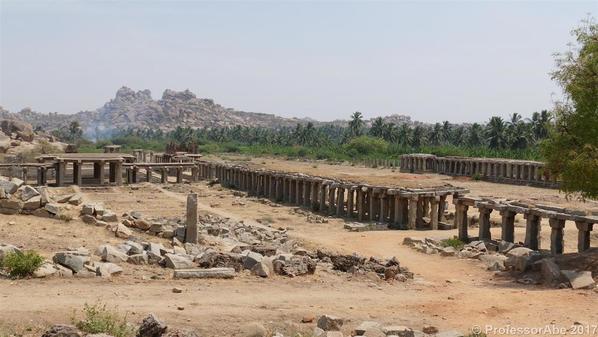
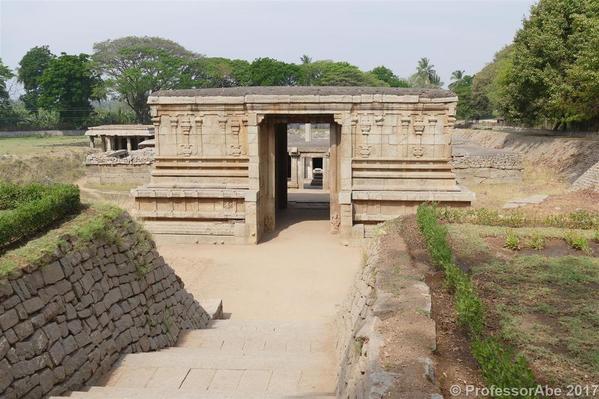

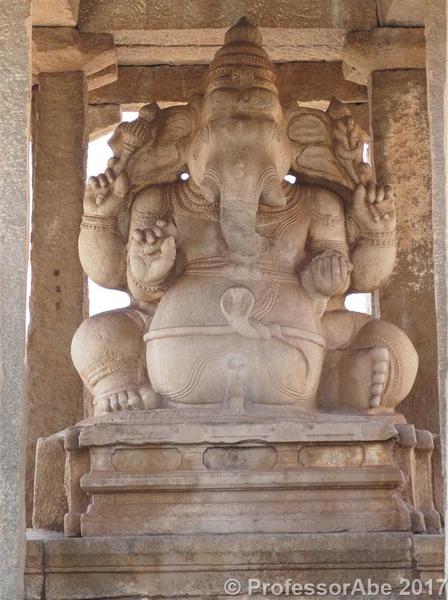
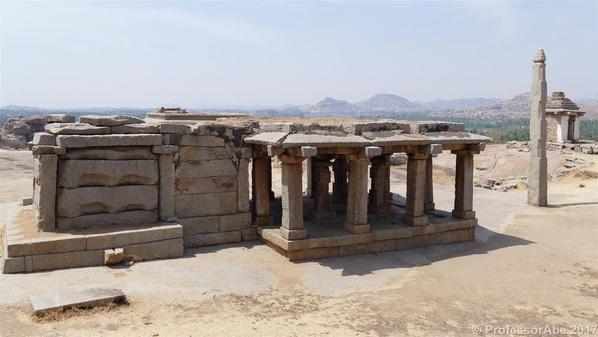
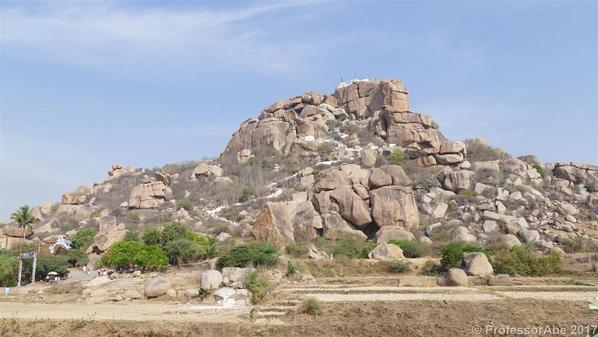


























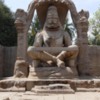



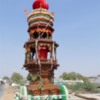
Comments (2)